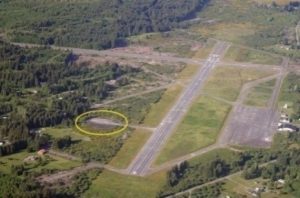 Abossein has been the Engineers of Choice on over 40 projects at the Naval Air Station Whidbey Island location. The following are a few of our successful Runway Projects that we have teamed with P & L General Contractors and Blue Mountain Electric. Working at these locations requires careful study of the layout criteria for safe standards for airfields, landing zones, heliports / helipads, and related permanent facilities, as well as the navigational airspace surrounding these facilities. The success of each project is mainly credited to excellent synergy, expertise and management skills of the team members along with superb cooperation of our NAVFAC’s partners.
Abossein has been the Engineers of Choice on over 40 projects at the Naval Air Station Whidbey Island location. The following are a few of our successful Runway Projects that we have teamed with P & L General Contractors and Blue Mountain Electric. Working at these locations requires careful study of the layout criteria for safe standards for airfields, landing zones, heliports / helipads, and related permanent facilities, as well as the navigational airspace surrounding these facilities. The success of each project is mainly credited to excellent synergy, expertise and management skills of the team members along with superb cooperation of our NAVFAC’s partners.
Repair Taxiway Charlie Lighting | NASWI, Oak Harbor, WA Our Electrical scope of this design-build project was to repair the airfield lighting system because the cables and lighting fixtures were at the end of their useful life and lighting fixtures had to be replaced with new energy efficient types. This project corrected these critical system deficiencies.
Repair Airfield Signage | NASWI, Oak Harbor, WA Provided Electrical engineering services to install new airfield signs to increase airfield safety for pilot landing and vehicle operations. The new modern signs contained LED technology to enhance the signs performance and energy efficiency.
Repair Airfield Lighting System | NASWI, Oak Harbor, WA Our Electrical scope of this design-build project was to repair several key airfield components on Naval Air Station Whidbey Island’s (NASWI) airfield. We provided a fully functional Runway Centerline Lighting (RCL) system which now spans the entire length of the runway and this required lengthening the run approximately 4,000 feet. Our team also replaced the antiquated lighting systems in 4 Simulated Aircraft Carrier Deck Lighting (SACDL) boxes located at the approach end of each runway and installed a fully functional Runway Visual Range (RVR) system for runway 14/32. On the other runway the team replaced the Constant Current Regulator (CCR) and is now fully communicable to the Air Traffic Control Tower (ATCT).
